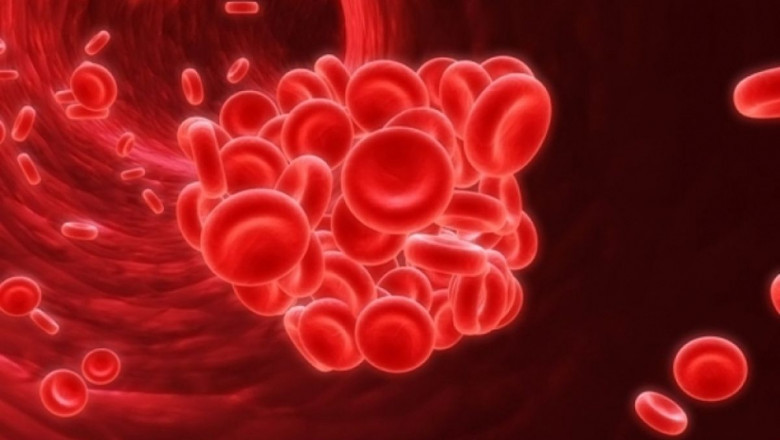views
Hemostasis refers to the process by which bleeding is stopped in the body. Several complex biochemical and cellular processes work together precisely to prevent blood loss from any damaged vessels. It involves activation of platelets along with plasma coagulation factors and fibrinolytic factors working in a coordinated fashion. Many diagnostic tests are available to evaluate different components of the hemostasis system and help identify any bleeding disorders.
Platelet Function Tests
Platelets in Hemostasis Diagnostics play a crucial role in initial plug formation to stop bleeding. Common platelet function tests include bleeding time, platelet aggregation studies, and PFA-100/200 closure time. Bleeding time directly measures in vivo platelet function by artificially inducing a small wound and timing how long it takes for bleeding to stop. Platelet aggregation studies examine the ability of platelets to aggregate in response to various agonists like ADP, epinephrine, collagen etc. using aggregometry. PFA-100/200 closure time tests the interaction of platelets with the subendothelium under high shear conditions similar to vascular injury, reporting the closure time for platelet plug formation. These tests aid evaluation of qualitative and quantitative platelet disorders.
Coagulation Factor Assays
The coagulation cascade involves the sequential activation of various vitamin K dependent and independent clotting factors. Functional clotting assays evaluate the overall activity of different parts of the coagulation pathway. Commonly performed coagulation tests include prothrombin time (PT), activated partial thromboplastin time (aPTT), thrombin time (TT) and fibrinogen levels. PT evaluates factors VII, X, V and II while aPTT assesses the intrinsic pathway involving factors XII, XI, IX, VIII, X, V and II. TT measures fibrinogen and fibrin polymerization. Specific coagulation factor assays are available to precisely quantify individual factor levels which is useful for diagnosis of hemophilia and other rare factor deficiencies.
Fibrinolysis Tests
After injury repair, the coagulated blood clot needs to be removed to prevent further obstruction. This is mediated through a regulated process of fibrinolysis. Tests to assess the fibrinolytic system include euglobulin lysis time, plasminogen, antiplasmin and D-dimer levels. Any abnormalities detected by these tests help identify hyperfibrinolysis or hypofibrinolysis indicating disorders like disseminated intravascular coagulation. D-dimer in particular has become a widely used marker to exclude venous thromboembolism.
Genetic and Specialized Hemostasis Tests
More specialized diagnostic tools aid in evaluation of rare bleeding disorders where routine tests may be normal. These include molecular tests for hemophilia gene mutations, von Willebrand factor antigen and activity levels, factor XIII levels, test for lupus anticoagulant and protein C, S and antithrombin deficiencies. Other advanced techniques involve platelet function analyzer (PFA-100), thromboelastography/thromboelastometry (TEG/ROTEM), whole blood/viscoelastic hemostatic assays and chromogenic assays for precise hemostatic evaluation. Integration of clinical findings along with results of various diagnostic tests help arrive at an accurate diagnosis of bleeding disorders and guide appropriate management.
Hemostasis diagnostics offer a diverse range of laboratory tests useful for evaluation of both acquired and inherited bleeding disorders affecting different components of the hemostasis system namely, platelets, vascular endothelium, coagulation factors and fibrinolytic factors. Timely interpretation of test results along with clinical correlation allows prompt diagnosis and optimal treatment of bleeding disorders. Ongoing development of advanced hemostatic testing aids further characterization of rare bleeding diathesis.
Get this Report in Japanese Language- 止血診断薬
Get this Report in Korean Language- 지혈 진단
About Author-
Priya Pandey is a dynamic and passionate editor with over three years of expertise in content editing and proofreading. Holding a bachelor's degree in biotechnology, Priya has a knack for making the content engaging. Her diverse portfolio includes editing documents across different industries, including food and beverages, information and technology, healthcare, chemical and materials, etc. Priya's meticulous attention to detail and commitment to excellence make her an invaluable asset in the world of content creation and refinement.
(LinkedIn- https://www.linkedin.com/in/priya-pandey-8417a8173/)















![[1 (888) 326-1024] How to Get in Touch with Expedia 24/7 Support Team: Phone, Email, and Chat Options](https://timessquarereporter.com/upload/media/posts/2025-06/01/1-888-326-1024-how-to-get-in-touch-with-expedia-24-7-support-team-phone-email-and-chat-options_1748757002-s.jpg)






Comments
0 comment